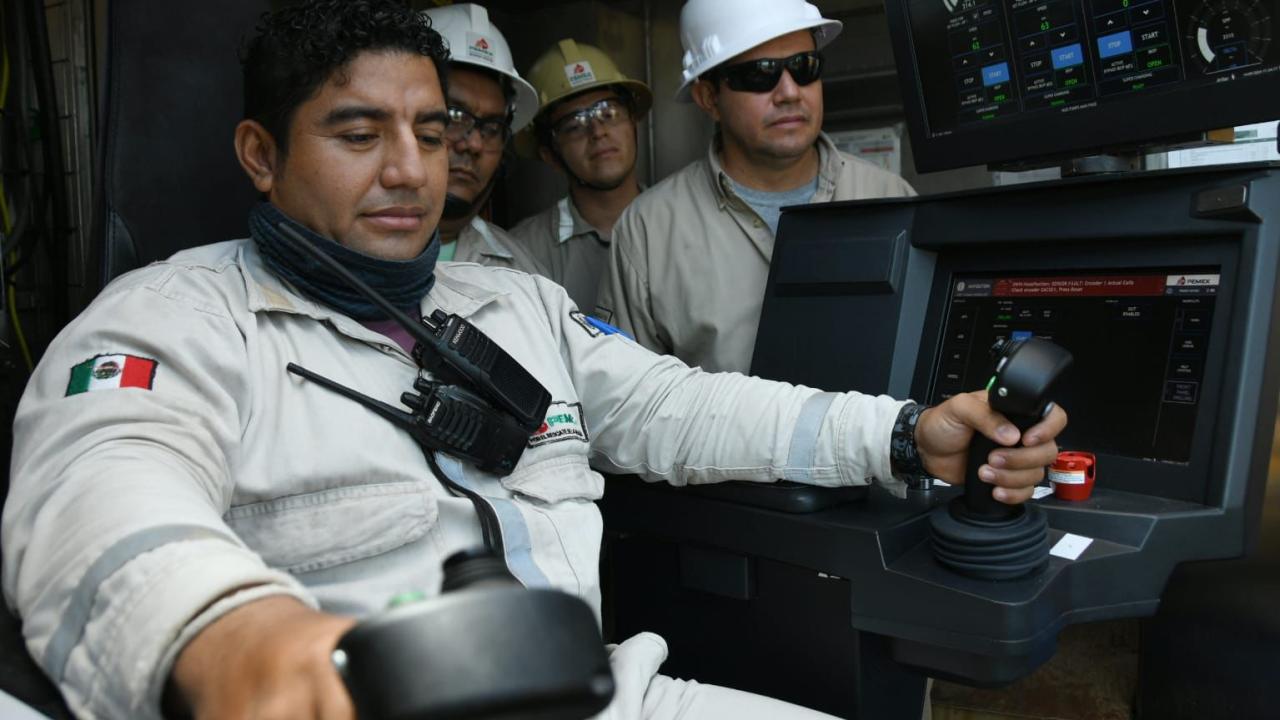
The development of this field could have an impact on the onshore areas of Veracruz, Tabasco and Chiapas, with plans to drill 14 additional wells in the region.
Petróleos Mexicanos (Pemex) reported the achievement of a goal of the exploration and production plan with the drilling of the well that will give its name to the Sitio Grande field, located in Reforma, Chiapas, with 4,106 vertical meters achieved to continue toward the planned objective of 8,300 total meters. This project seeks to exploit a prospective resource estimated at 148 million barrels of crude oil equivalent.
The development of this field could have an impact on the onshore areas of Veracruz, Tabasco and Chiapas, with plans to drill 14 additional wells in the region.
According to Octavio Romero Oropeza, CEO of Pemex, the discovery could reveal new hydrocarbon reserves in areas not yet explored.
Romero Oropeza highlighted in a statement the comparison with other fields such as Ixachi and Tupilco, where deposits were discovered at great depths.
In Ixachi, the discovery was made beneath the Perdiz field, and in Tupilco, Tupilco Profundo was found beneath the Tupilco Shallow field.
This is the concept that is being sought at Sitio Grande; a deposit below 8,000 meters and, as with other early developments, we have the infrastructure very close by, so we could develop very quickly in the logic of early production,” explained Romero Oropeza.
In addition, Pemex has 11 additional exploration opportunities in the same region, with an associated resource of 800 million barrels of crude oil equivalent, according to the oil company.
Drilling at Sitio Grande began in February of this year and, if results are positive, production could begin on January 3, 2025, according to Renato Gamiño Ramos, Equipment Operation and Maintenance Manager.
According to Pemex, the oil company has managed to reduce drilling times in deep fields. Currently, projects with average depths of 7,500 to 8,100 meters are completed in 98 days, which represents an improvement of 122 days compared to previous administrations.
“Sitio Grande is special because, unlike other exploratory wells where we go to defined geological areas, this well goes to an Oxfordian target where we have not gone on other occasions… It opens up a very important panorama for us because it would give us the certainty that not only here, but in many other areas of Veracruz, Tabasco and Chiapas, we would have the option of hydrocarbon reserves,” concluded Romero Oropeza.









